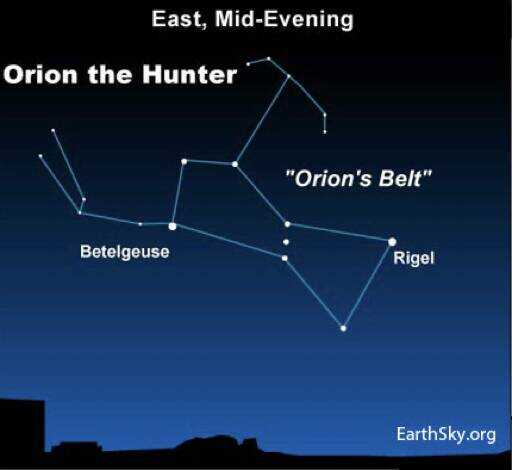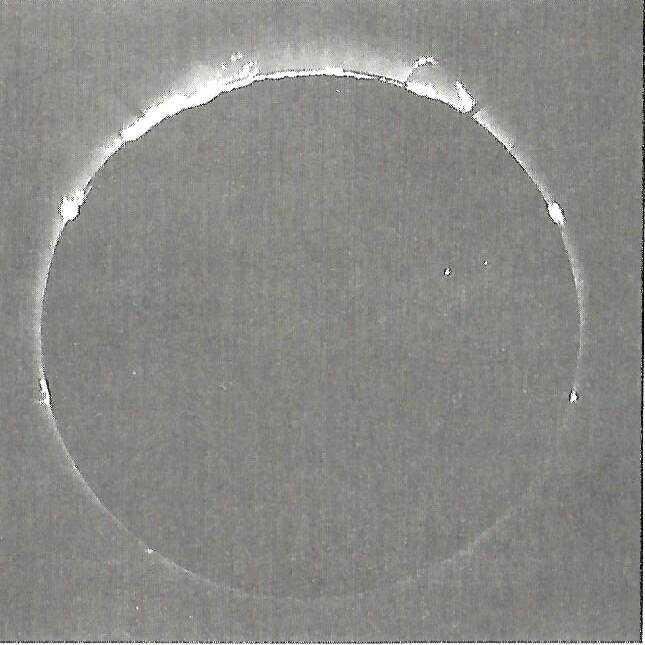The Energy of the Sun – 2024 Eclipse Corner #1

The sun is a star which has enough mass to produce gravity that will pull a whole system of objects around it. Quite a bit bigger than the earth, 1,300,000 earths could fit into the Sun.
Our solar system includes eight planets, several sub-planets, asteroids, comets, meteors, dust and gas.
The sun actually contains 99.8% of the system’s mass. The sun fits in a package of stars we see in our night sky that range from blue to red in color. The more massive stars produce more heat and have the color blue. The smaller mass stars are less hot and are red. Our sun, as you have seen, is yellow and considered to be an average size star. It is true, blue is a hotter color than red.

A red electric stove burner can be very hot but a blue burner would melt the pots and pans.
If you have not seen different colored stars, here is a good place to look in February – the constellation Orion. Orion, the hunter, will be slightly tilted in the east –southeast in February. Rigel is a very big star, exhibiting the color blue. Betelgeuse is at a different stage in star development, but exhibits the cool color of red. It’s fun to look for the color of stars.
The sun contains an enormous amount of energy we see and feel as heat and light. What produces this star energy? Early man compared it to a fire, but who is throwing all the wood on constantly? Since the 1920s, astronomers believed this is nuclear energy. There are two kinds of nuclear reactions. Fission is splitting the atom which is what we did in building the atomic bomb and in nuclear power plants of today. Fusion is combining atoms. This is what the sun does. Man is still working on providing energy by Fusion.
The fusion reaction begins because of a massive squeezing effect of the gravity of all the mass of the sun. The sun is made of hydrogen and helium. Basically, the sun’s gravity pushes four hydrogen atoms together to become one helium atom plus a little left over which produces the heat and light of the sun. Astronomers believe this fusion reaction will keep “burning “ hydrogen for another five billion years.
Our moon looks to be equal to the size of the sun, but the sun is 400 times greater than the moon. The sun is just 400 times farther away than the moon. Therefore, we have the opportunity to witness that most amazing of spectacles, the moon completely blocking out the site of the sun, a total eclipse of the sun.
In 1859 chemists Kirchhoff and Bunsen discovered colors released in light by burning gases of different elements. These were the fingerprints of the natural elements. In other words, each element would show its own bright line colors.
During a total eclipse in 1868, French astronomer Jules Janssen studied spectral lines of the sun. A new group of colors was seen indicating a new gas. What was the sun made of? * from Tyler Nordgren’s book, Sun, Moon, Earth.
In 1859 chemists Kirchhoff and Bunsen discovered colors released in light by burning gases of different elements. These were the fingerprints of the natural elements. In other words, each element would show its own bright line colors. During a total eclipse in 1868, French astronomer Jules Janssen studied spectral lines of the sun. A new group of colors was seen indicating a new gas. What was the sun made of? The sun is 93 million miles away, but astronomers were identifying its composition from earth by the colored lines its light produces.
Chemist Janssen and British Astronomer Norman Lockyer independently studied these prominences. The gas hydrogen was detected by the bright lines displayed, but another unknown gas was seen. Janssen found no element with the same color lines and proposed a new element. Lockyer studied it and named it Helium after the sun god, Helios. It would take until 1895 until helium was found on earth. The sun is 93 million miles away and astronomers are identifying its composition from earth by colored lines it produced.
Future Eclipse Corners will show you more about astronomy and the upcoming total Solar Eclipse coming on April 8, 2024.
